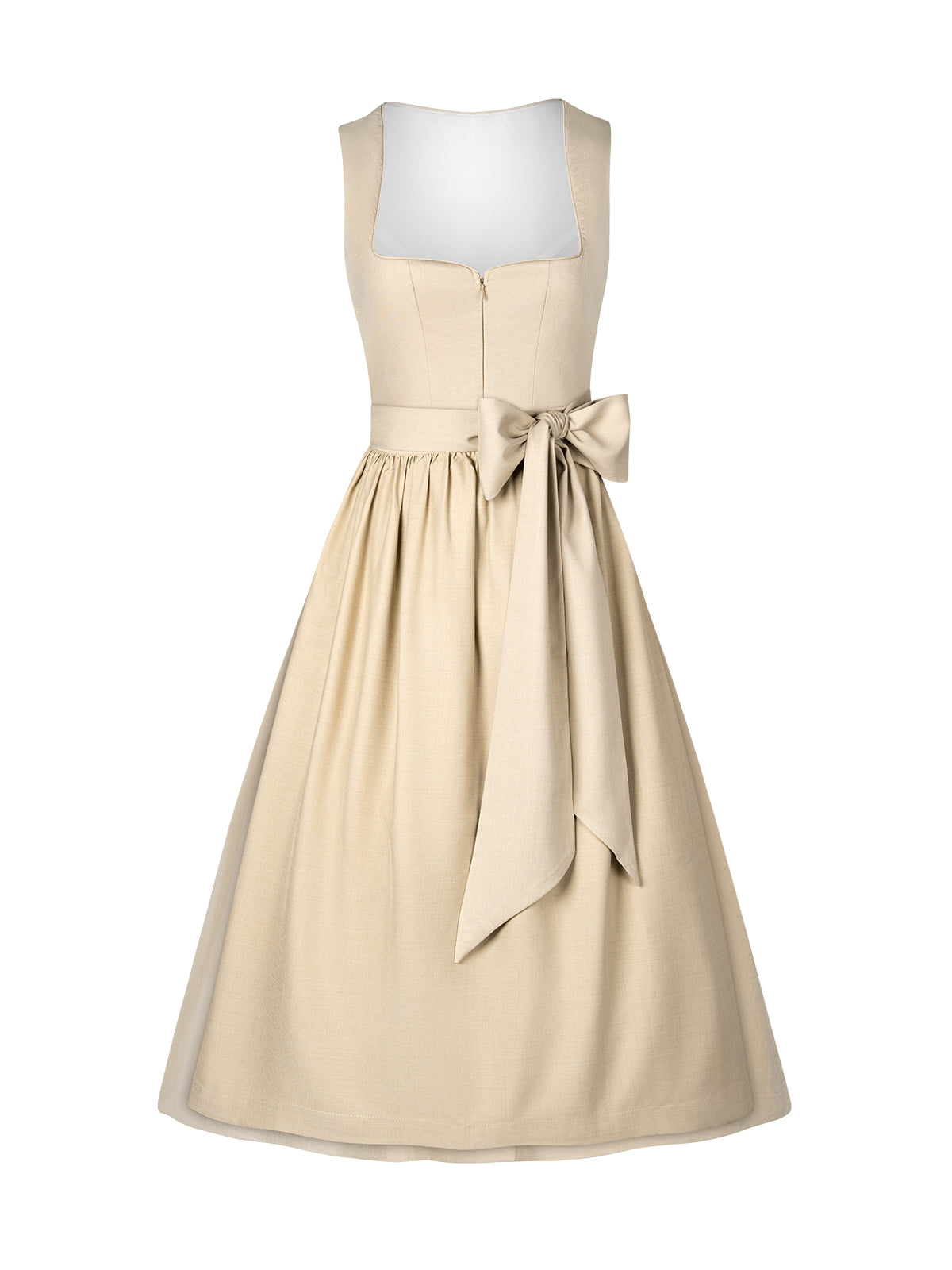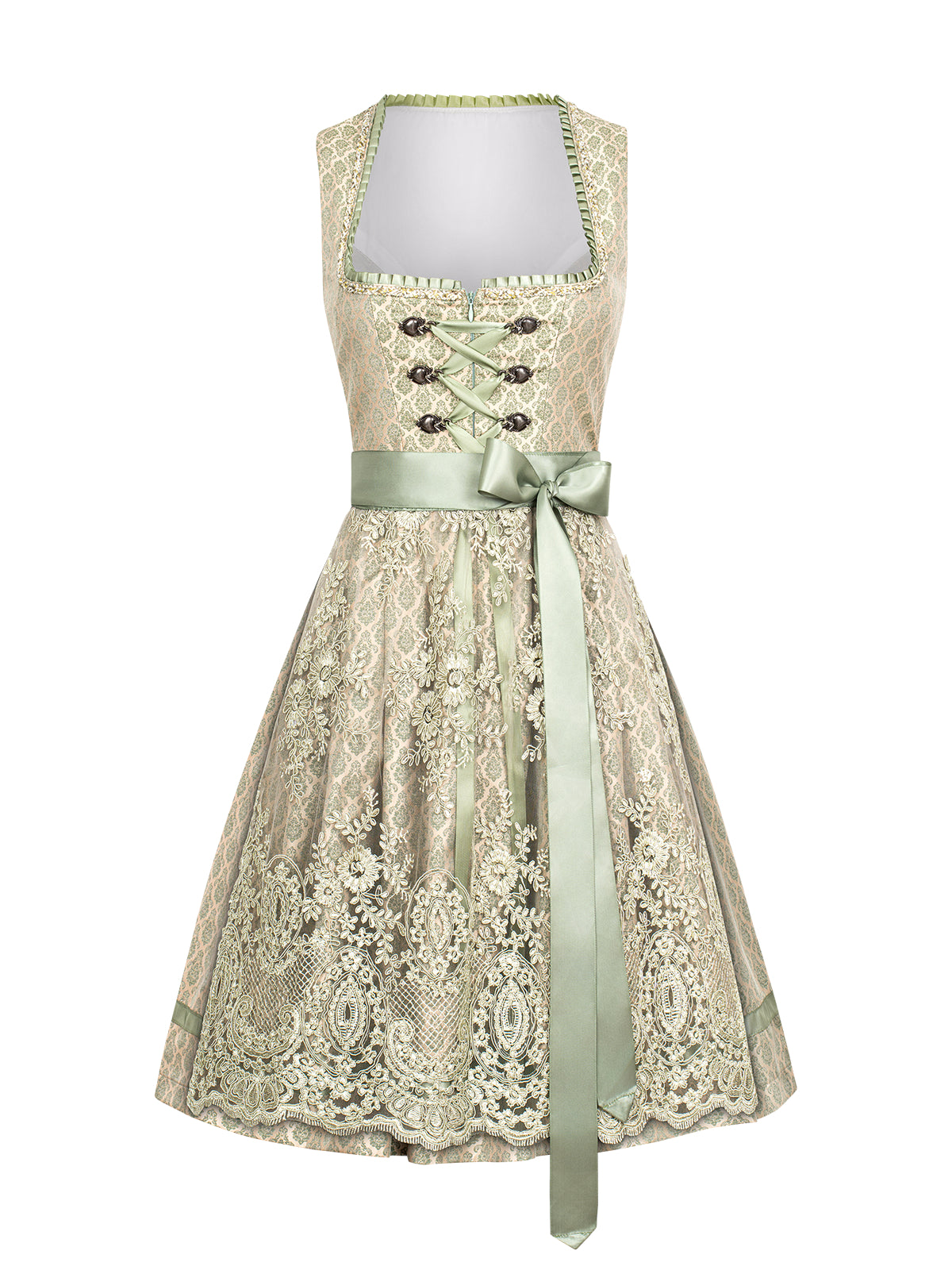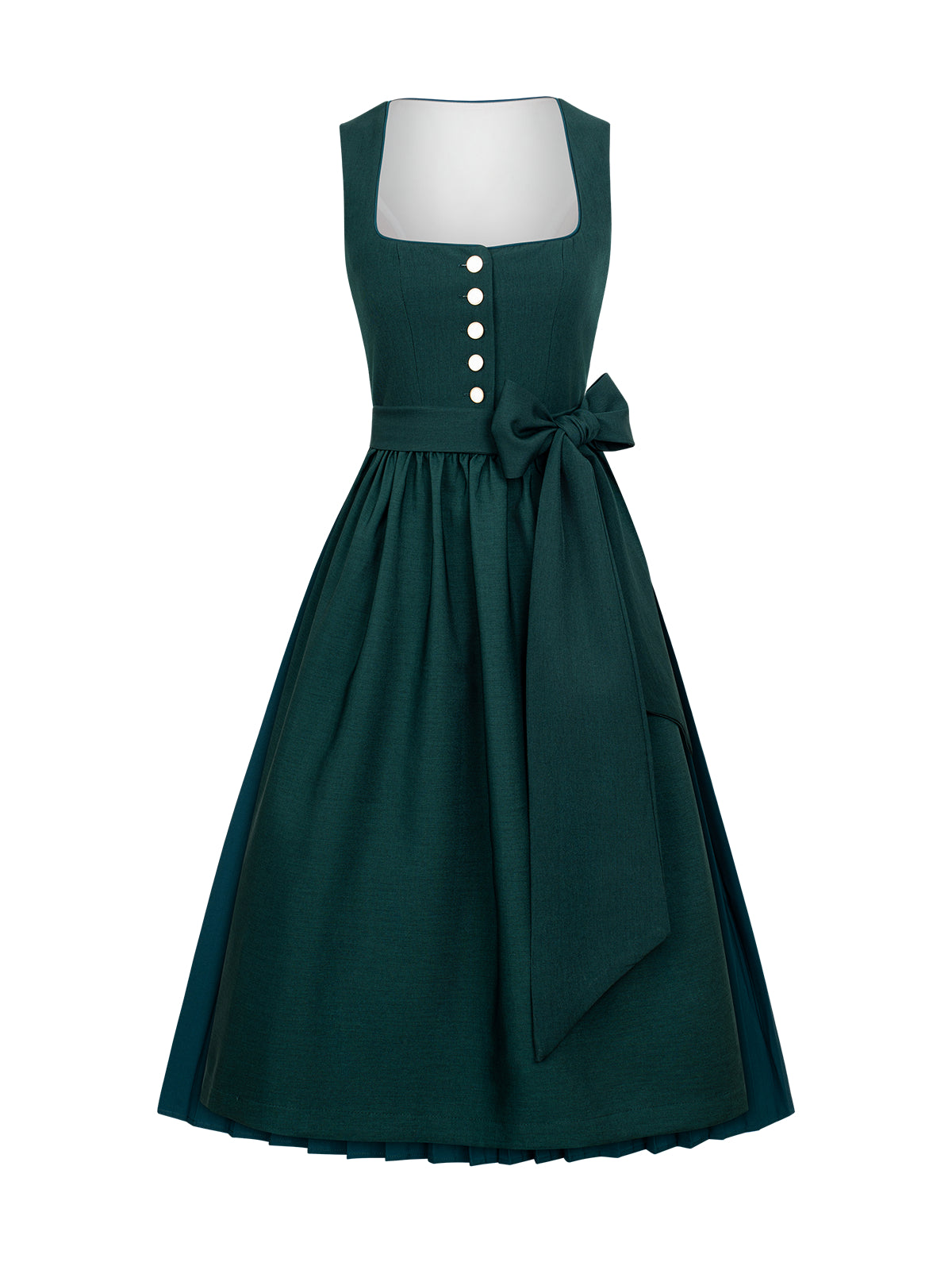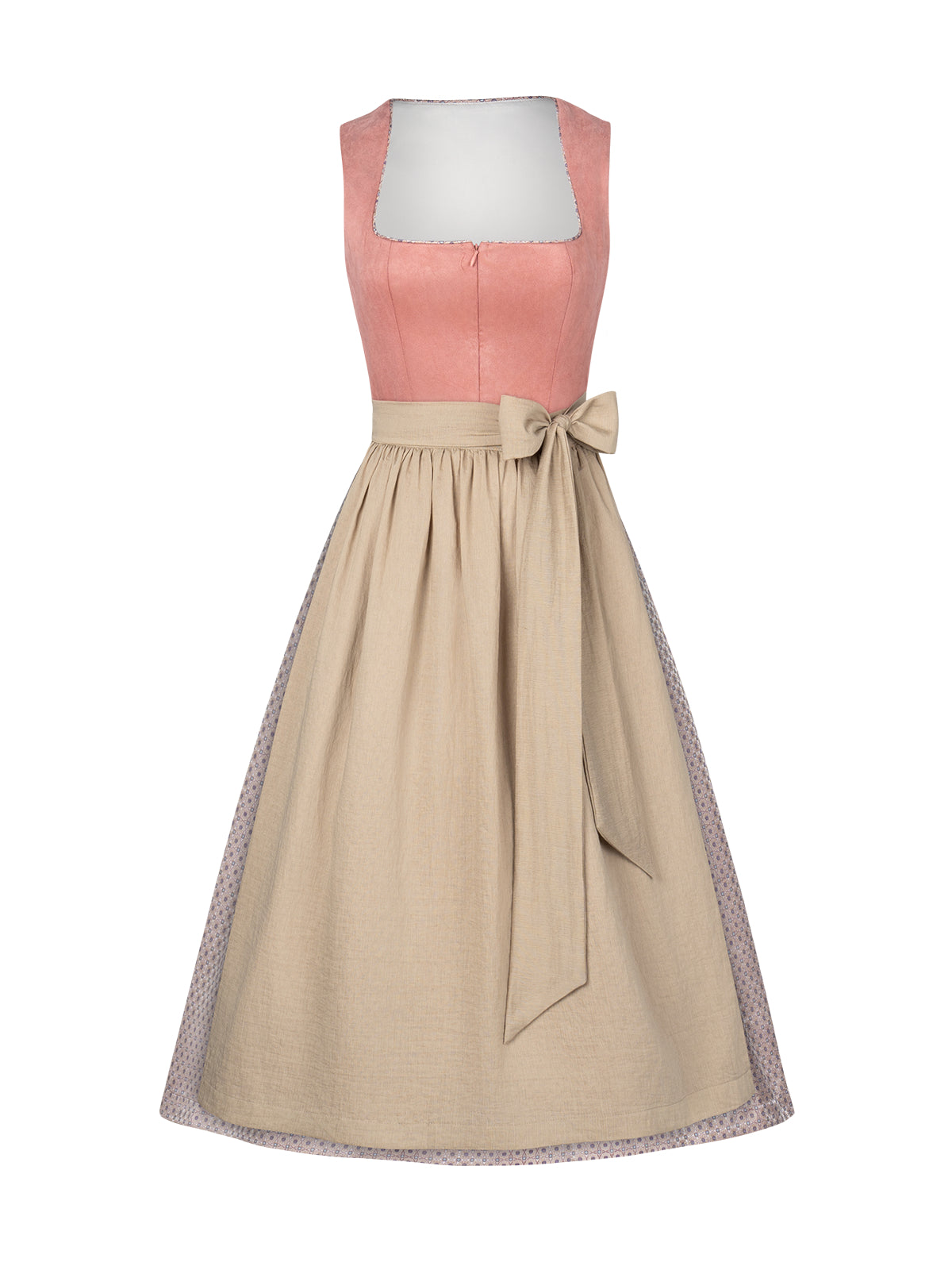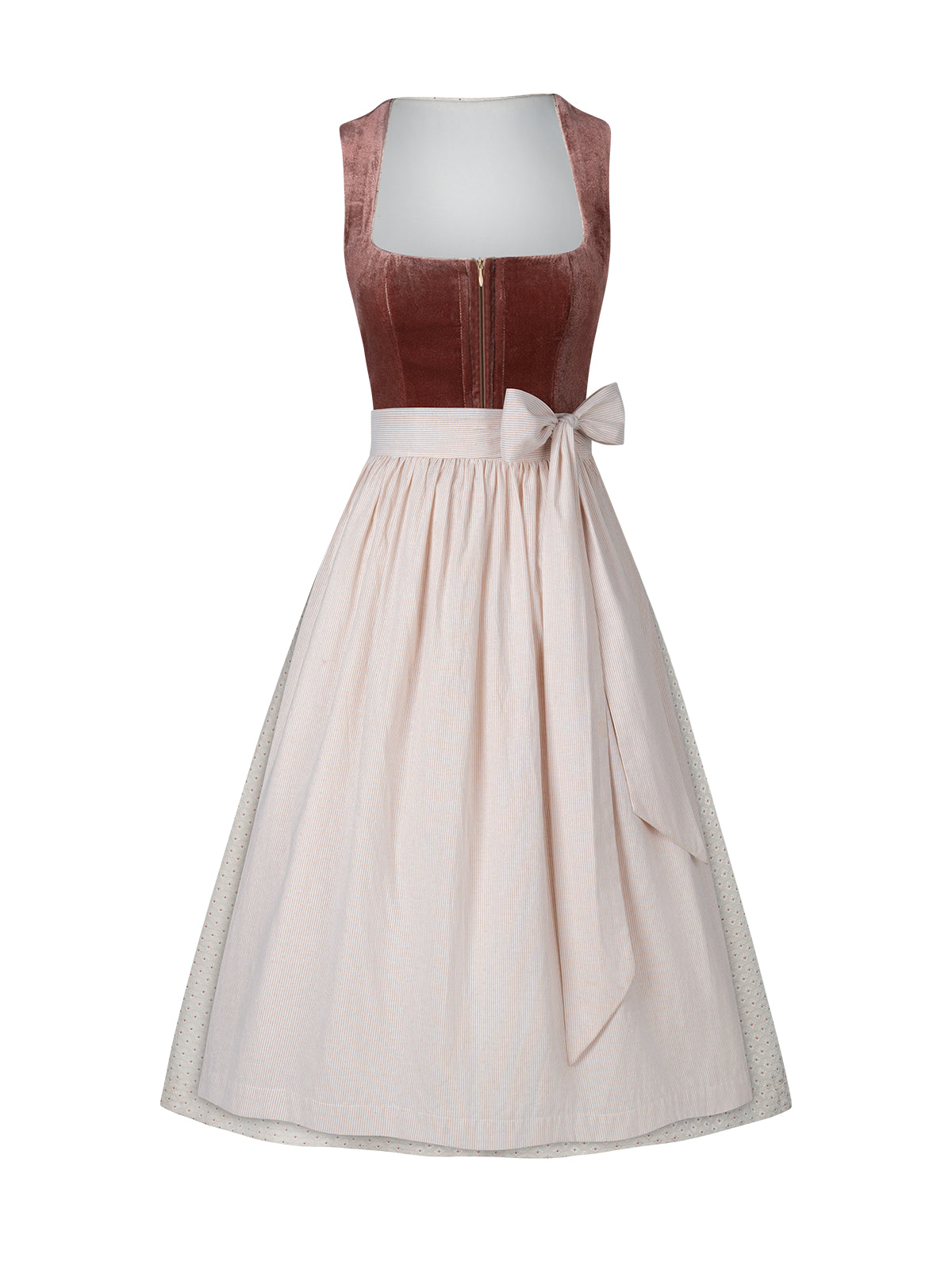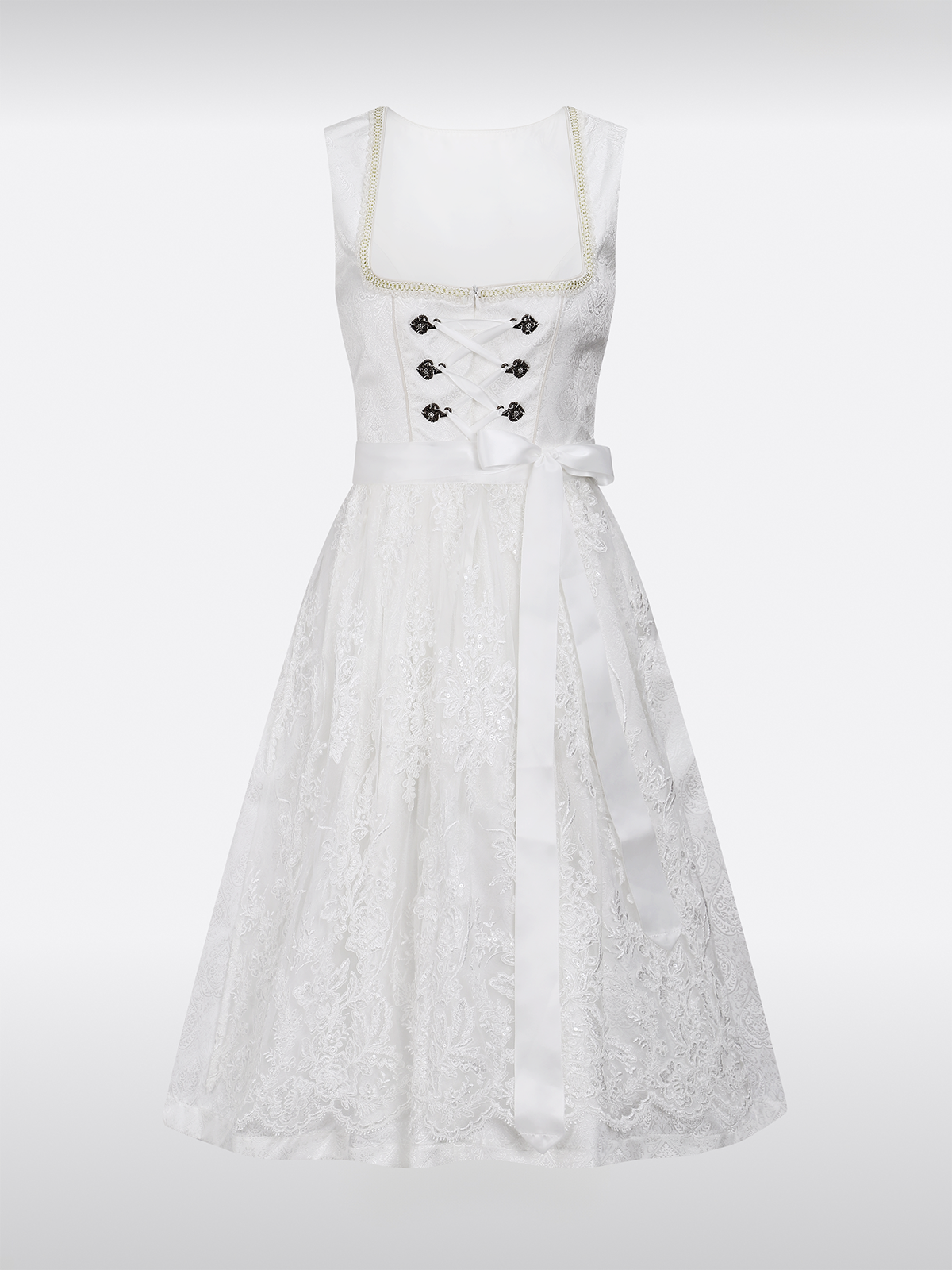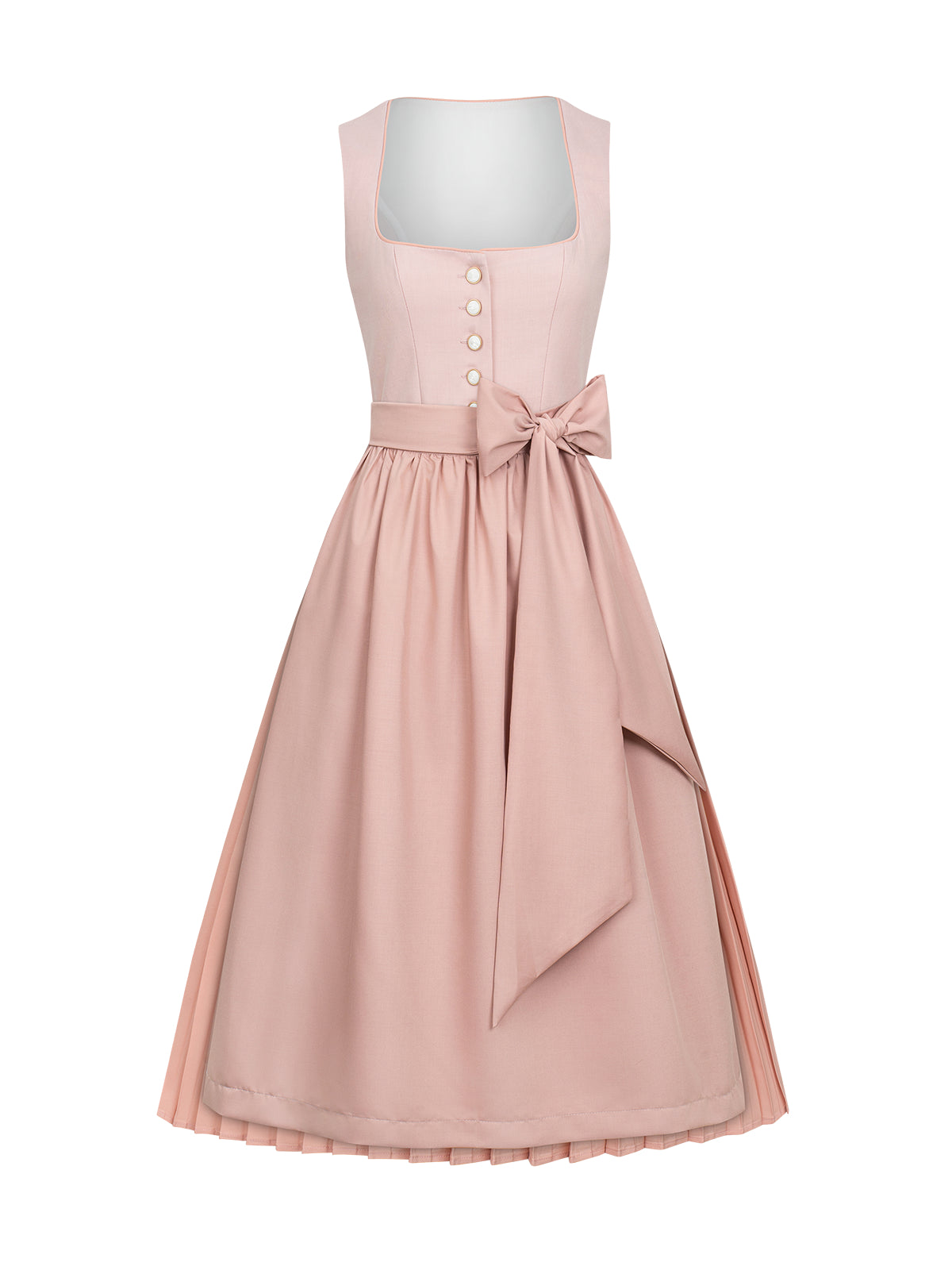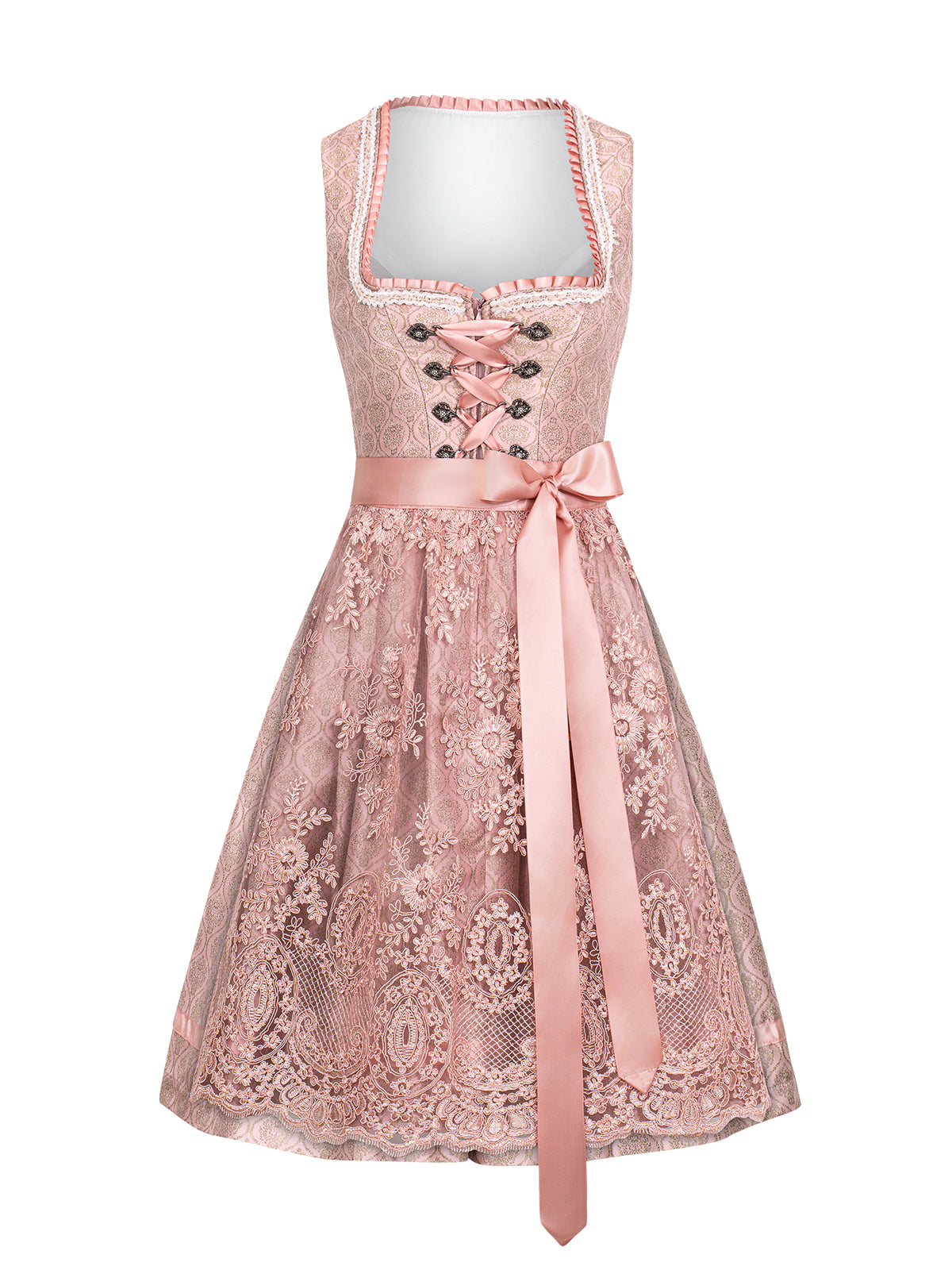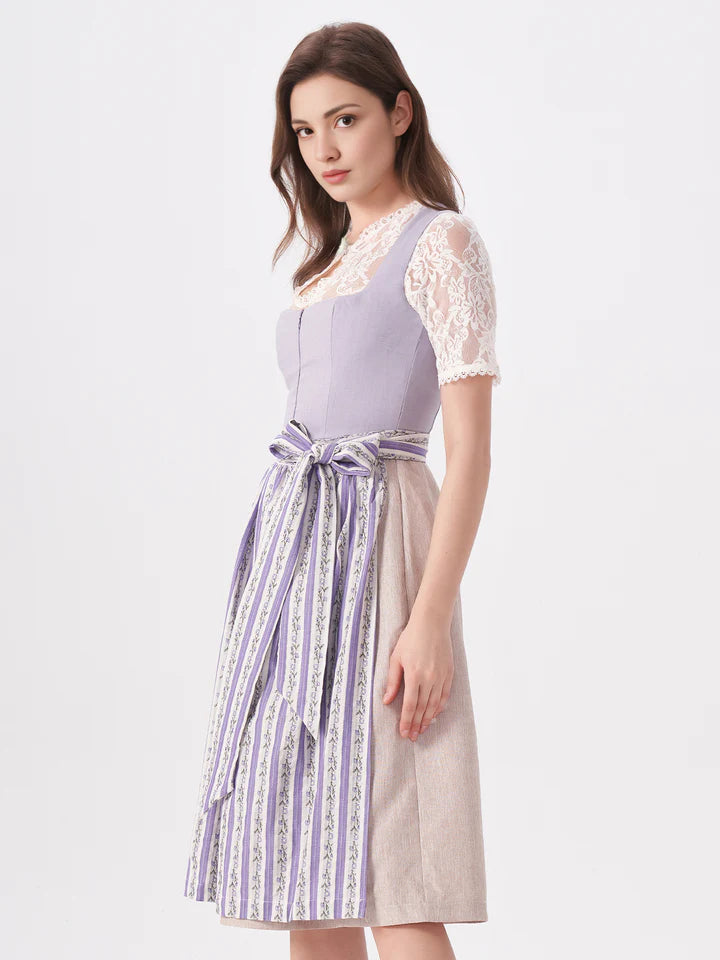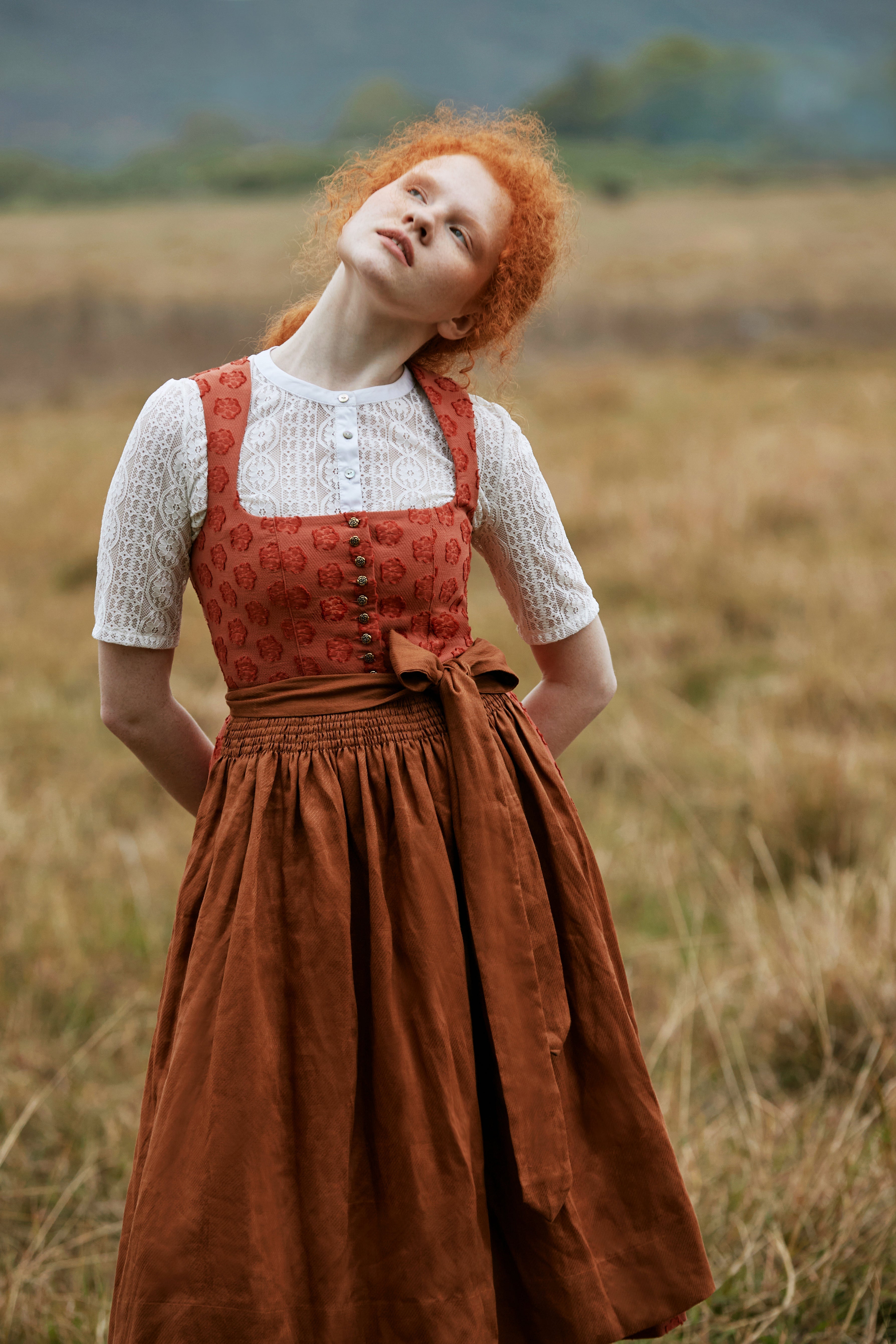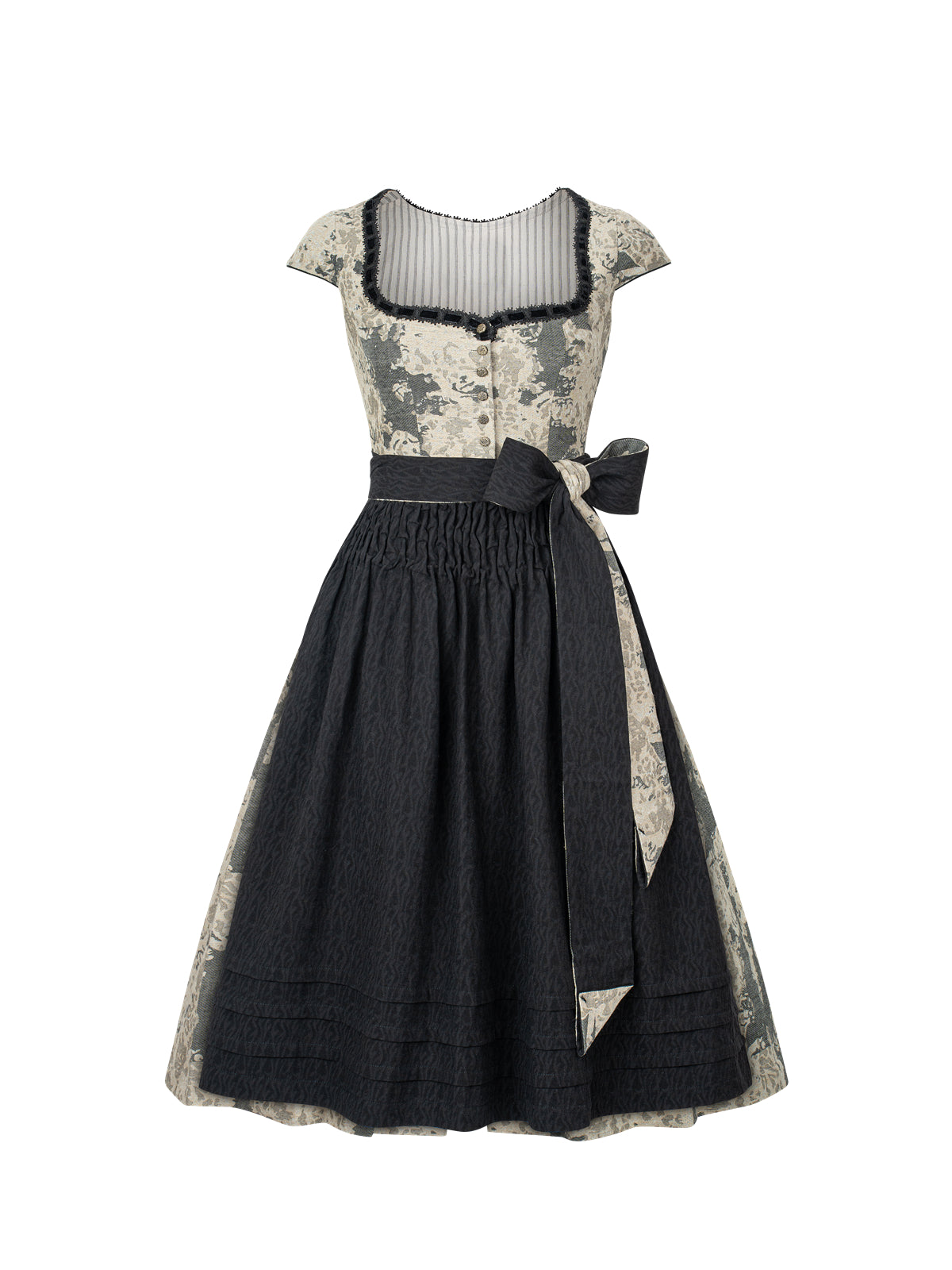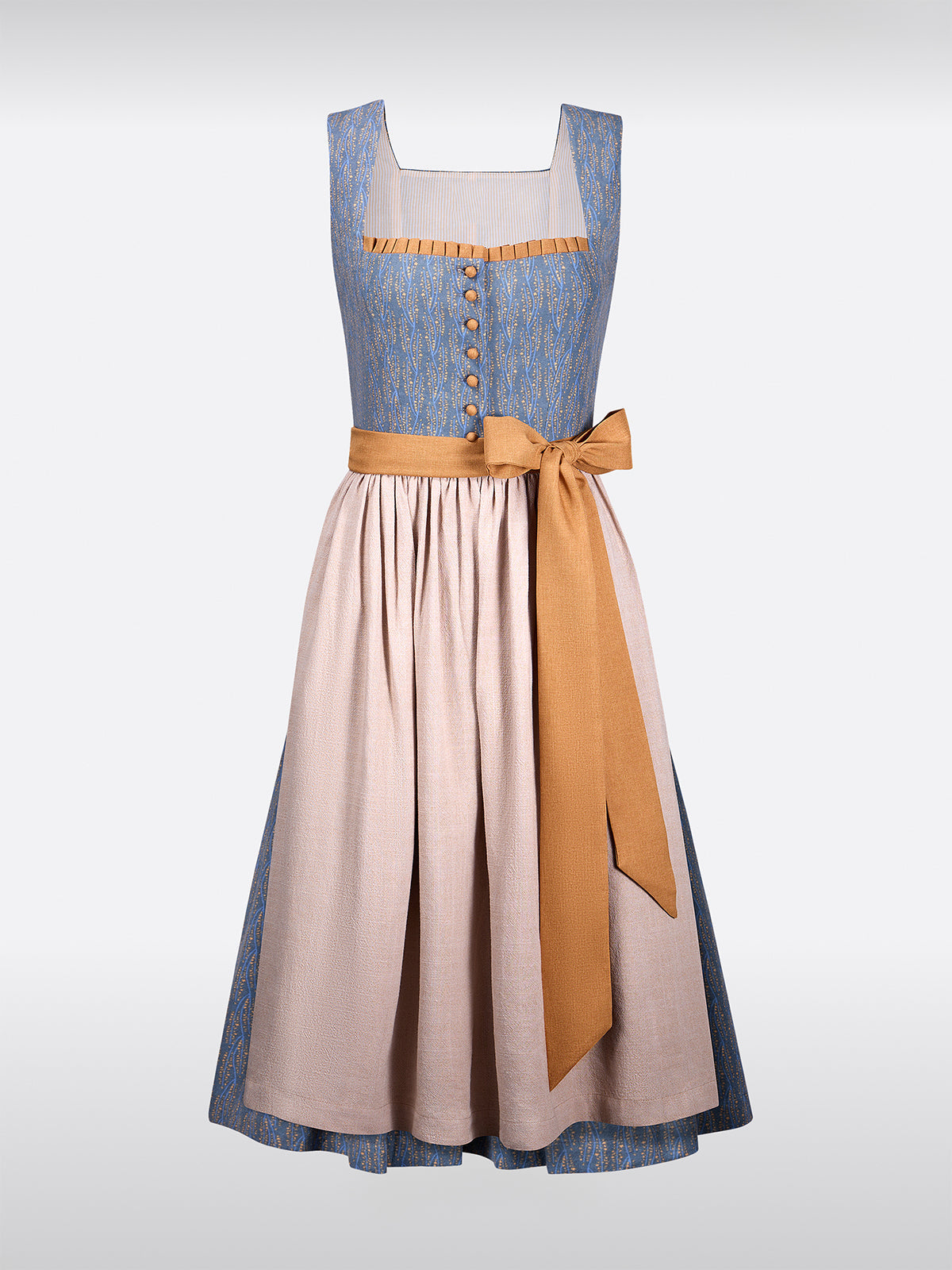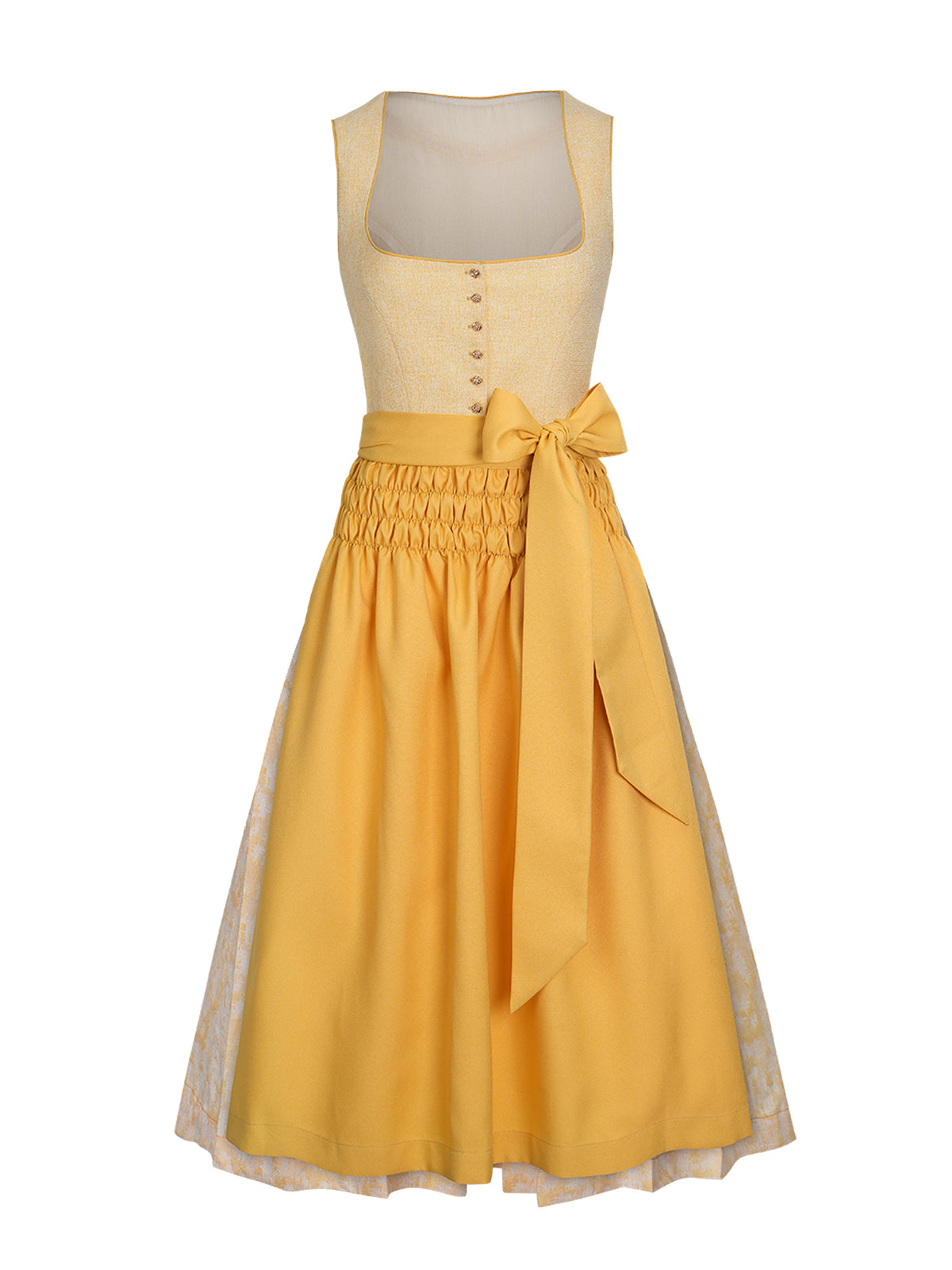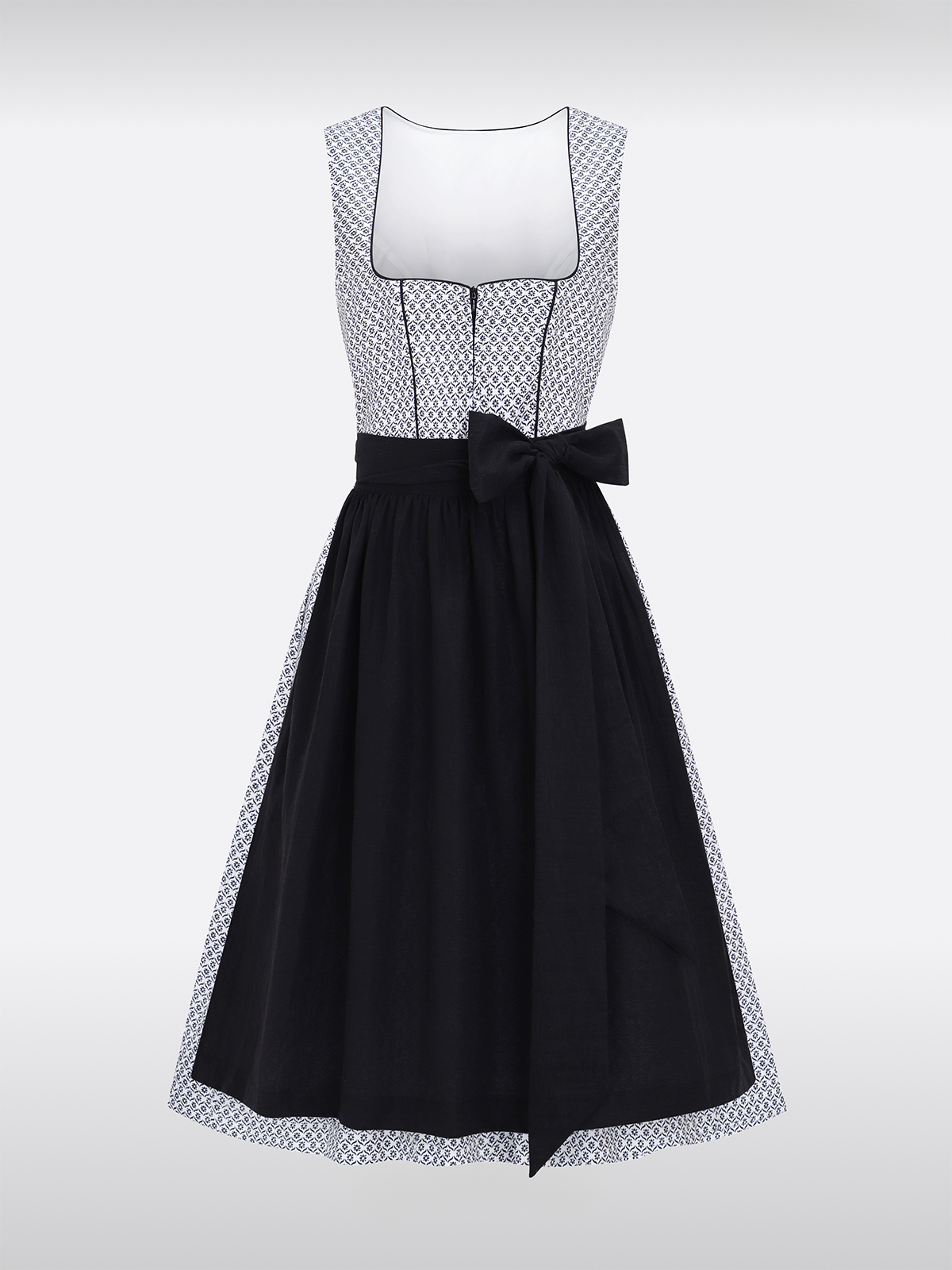The dirndl has been a symbol of tradition and custom for centuries, but it has also evolved into a modern fashion classic. A plain dirndl, in a unique color like lilac, with a practical hook closure, offers a blend of stylish elegance and tradition. In this combination, the traditional costume becomes an expression of individuality without sacrificing its roots.
In this article, we'll delve deeply into the advantages of a lilac dirndl, the importance of solid color, and the practicality of the hook closure. Through the deliberate use of dialogue and background descriptions, we'll illuminate how the dirndl is reflected in the lives of modern women and what potential challenges and relationships lie hidden in the folds of the fabric.
The dirndl in lilac colours: gentle elegance with a touch of romance
One of the most delicate and yet fascinating colors found in traditional costumes is lilac. Lilac radiates a soft, almost romantic elegance that is both subtle and striking. Women who choose a Dirndl lilac Those who choose lilac often seek a unique look that's not too garish, yet appealing and stylish. Lilac is a color that suits both formal occasions and more casual events.
During a festival, a scene might unfold like this: Two friends enter the festival tent together, both wearing beautiful lilac dirndls. While the conversations around them are loud and lively, a silent, unspoken pressure remains between them. "You look stunning in your dirndl," one says, but her eyes betray something else—a slight uncertainty. The subtle cracks in their friendship become increasingly noticeable, yet the lilac dirndl continues to radiate gentle beauty, skillfully concealing these inner tensions.
Lilac is especially popular for weddings or spring festivals, where the color reflects the blossoming blossoms and the awakening of nature. The combination of the romantic color and the classic shape of a dirndl results in a dress that embodies both the elegance of the past and modern style.
Dirndl in one color: The art of simplicity
A plain dirndl stands out from the often richly decorated and patterned dirndls due to its simplicity. But this simplicity is by no means boring—quite the opposite. A plain dirndl offers the opportunity to add accents with accessories, aprons, or jewelry, thus highlighting your individual style.
A scene from the hectic hustle and bustle of an Oktoberfest: The camera pans over the colorful crowd, bright colors and elaborate patterns everywhere. But amidst this visual hubbub, a woman enters the tent, dressed in a plain lilac dirndl. The people around her immediately notice her—not because she's loud or intrusive, but because she stands out with her simplicity. Her friend gives her an admiring glance and says quietly, "Your calm and simplicity radiate more than all the colors here combined." It's a moment of silent recognition, but the tension between them remains.
A solid color doesn't mean the dirndl is less expressive—on the contrary, it creates space for subtle elegance and clean lines. A solid-colored dirndl is the perfect choice for women who prefer a minimalist look without sacrificing the traditional dirndl silhouette.
The hook closure: tradition and functionality combined
The hook closure is a typical dirndl detail that is not only functional but also aesthetically pleasing. Unlike a zipper, which is often hidden, hook closures are visible and an integral part of the design. They lend the dirndl a certain authenticity and recall the artisanal traditions behind every traditional costume.
Imagine the following scene: A young woman, excited and nervous, is preparing for a big ball. Her lilac dirndl hangs ready, and her hands tremble slightly as she fastens the hooks on her bodice. Each hook clicks into place with a small sound, and with each click, her nervousness is eased a little. The hook closure gives her a sense of stability and security, while around her, time speeds up, people move, and anticipation builds.
The hook closure has one advantage over other fastening systems: It is durable, easy to handle, and blends harmoniously with the dirndl's design. Especially for festive occasions where the dirndl is often worn for several hours, the hook closure offers a comfortable and reliable solution.
The hidden pressure: Emotional tensions behind the lilac dirndl
But the world doesn't always remain as calm and elegant as the dirndl itself. Often, tensions hidden within the folds of the lilac dirndl are hidden. The delicate colors and simplicity of the plain dirndl may radiate calm, but the emotional tensions between the people who wear this traditional costume tell a completely different story.
As the party is in full swing, the woman wearing the lilac dirndl notices that the mood between her and her companion is shifting. Their conversations become shorter, their glances less cordial. She instinctively reaches for the hook fastener of her dirndl and nervously twists it. It's a small, inconspicuous gesture, but it symbolizes her growing insecurity. The space around her suddenly feels smaller, even though nothing has changed externally. The simplicity of her plain dirndl contrasts with the inner tensions she can no longer ignore.
These subtle cracks in the relationship are reflected in the characters' gestures and behavior. It's a quiet tension, revealed only through small hints and subtle movements. The lilac dirndl appears calm and elegant on the outside, but the hearts of the wearer and her companions are simmering.
Quick scene changes: From calm to drama
The narrative switches at a rapid pace between different scenes that build emotional tension. The wearer of the lilac dirndl suddenly finds herself in a different environment – a change from the noisy festival meadow to a quiet corner of the garden. Here she tries to clear her head. The gentle rustling of the fabric is the only thing that can be heard in the silence. She takes a deep breath, feels the texture of the dirndl
Hook closure in her fingers and remembers why she chose this monochrome dirndl – because of its simplicity, which now acts like an anchor in this emotional confusion.
But the calm doesn't last long. Her friend approaches her, a tense expression in her eyes. "What's wrong with you?" she asks, her voice trembling with tension. The rapid succession of scenes, the shifts from calm to dramatic, reflects the emotional turmoil the two women are going through.The close bond is put to the test – and in these moments the dirndl is not just a dress, but a silent witness to these inner struggles.
Conclusion: The Dirndl as an expression of style and inner tension
The plain dirndl, especially in the soft lilac color, offers a stylish and simple elegance that blends perfectly with modern traditional fashion. Combined with the hook closure, which combines tradition and functionality, it becomes a garment that is not only beautiful to look at, but also practical and comfortable. Yet, behind the outward serenity of the lilac dirndl, deep emotional tensions can lie hidden, expressed through subtle gestures and quiet moments.
The rapid succession of scenes and the skillful use of dialogues make it clear that the Dirndl plain is not only a fashion statement, but also functions as an emotional mirror. It accompanies its wearer through highs and lows, through moments of uncertainty and self-affirmation, and becomes a faithful companion on this journey.
The dirndl is and remains a symbol of tradition, but in its modern interpretation it is also an expression of personal style, elegance and inner strength.

